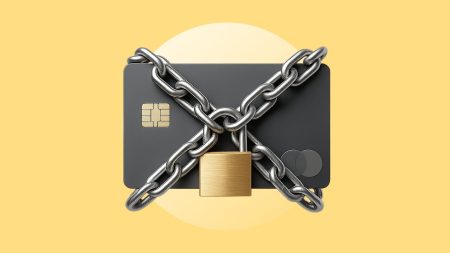SDI Productions/Getty Images
Key takeaways
- A VA certificate of eligibility (COE) is evidence that you meet the service requirements for a VA loan.
- Having a COE does not guarantee loan approval. You’ll also need to meet credit and debt-to-income guidelines, which vary by lender.
- COEs can be obtained by active-duty military, veterans, National Guard and Reserve members and surviving spouses of military members who meet eligibility requirements.
If you qualify for a VA loan, you can obtain a mortgage without needing a down payment or having to pay for mortgage insurance. However, you need to apply for a VA loan certificate of eligibility (COE) before you can apply for the loan.
What is a VA certificate of eligibility (COE)?
A VA loan certificate of eligibility (COE) is a document from the Department of Veterans Affairs that shows you meet the VA loan requirements to be eligible for funding. Without it, you won’t be able to take advantage of VA loan rates and other benefits. The COE, however, doesn’t guarantee that you’ll get approved for a mortgage. For that, you’ll also need to satisfy a lender’s own criteria.
Who qualifies for a VA certificate of eligibility?
Not all service members, veterans and their spouses automatically qualify for a VA certificate of eligibility. To be able to receive the document, you’ll need to meet requirements, which can vary based on when you served:
- Active-duty military: If you are on active duty now, you need to have served at least 90 continuous days to qualify for a VA loan certificate of eligibility.
- Veterans: For veterans, the service requirements are a bit more complex, varying from 90 days of active duty to 24 continuous months. Your discharge status is also a factor. To determine if you meet the requirements, review the VA’s standards.
- National Guard or Reserve members: For National Guard or Reserve members who served between August 2, 1990 and the present, you need to have served at least 90 continuous days on active duty to qualify for a COE. If you served prior to August 2, 1990, review the VA standards above.
- Surviving spouses: Surviving spouses might also qualify for a COE under certain circumstances: Your spouse must either be missing in action or a prisoner of war, or died in service or of a service-related disability, and you can’t have remarried before December 16, 2003 or before your 57th birthday.
What if I don’t meet the minimum service requirements?
If you don’t meet the minimum service requirements, you may still be able to qualify for a COE if you were discharged for a reason such as a medical condition, a service-connected disability or hardship.
How to get a VA loan certificate of eligibility
There are three main options for getting your VA loan certificate of eligibility:
- Apply online: The VA eBenefits online portal is the easiest and fastest route to get your letter of eligibility.
- Ask your mortgage lender: If you know which VA lender you’d like to work with, you can ask the lender for help obtaining your COE.
- Apply via mail: You can print out the VA’s COE request form, complete it and mail it to the appropriate regional loan center (the addresses are on the form). Keep in mind that this option will take extra time.
In addition, depending on your status, you’ll need to fill out some extra paperwork and provide more documentation:
- Active duty: You’ll need a statement of service signed by your commander, adjutant or personnel office that includes your name, your Social Security number and date of birth. The statement should also document the day you started your service, any lost time and the name of the command providing the information.
- Veteran: If you are a veteran, you’ll need your discharge or separation papers (DD214).
- Discharged but never activated: If you are a discharged member of the National Guard or Reserves and were never activated, you’ll need to meet a few other requirements to document your eligibility. Check the VA’s complete list of what you need for your application.
- Surviving spouse: Surviving spouses must complete the VA’s Request for Determination of Loan Guaranty Eligibility–Unmarried Surviving Spouses form. Then, you’ll need to track down your spouse’s military records, which you can do via the National Archives; a copy of your marriage license; and a copy of your spouse’s death certificate.
How long does it take to get a COE?
If you apply online and your eligibility is easy to verify, getting your certificate of eligibility for a VA loan can be a relatively quick process: roughly 30 days. If you can, though, apply early, and allow up to six weeks for processing.
In rare cases, verifying service and eligibility can take time. For example, if your discharge was classified as “less than honorable,” you can go through the VA’s Character of Discharge review process, which can take up to a full year.
Why are COEs necessary for VA loans?
A VA loan certificate of eligibility provides documentation that you meet the service requirements to apply for a VA home loan. Lenders are required to obtain proof of eligibility during the loan process.
A VA loan COE also outlines your loan entitlement, which is the amount the VA will guarantee should you default on the loan. The exact amount of your entitlement will be impacted by whether you have an outstanding VA loan you’re paying back. You’ll have reduced entitlement if you have an existing mortgage. But if you’ve never had a VA loan or you took out a VA loan, paid it back in full, and sold the home, then the VA will restore your full entitlement benefit.
VA certificate of eligibility FAQ
Why we ask for feedback
Your feedback helps us improve our content and services. It takes less than a minute to
complete.
Your responses are anonymous and will only be used for improving our website.
Help us improve our content
Read the full article here












